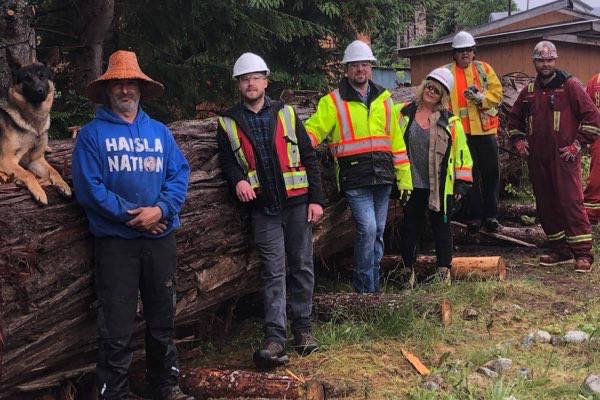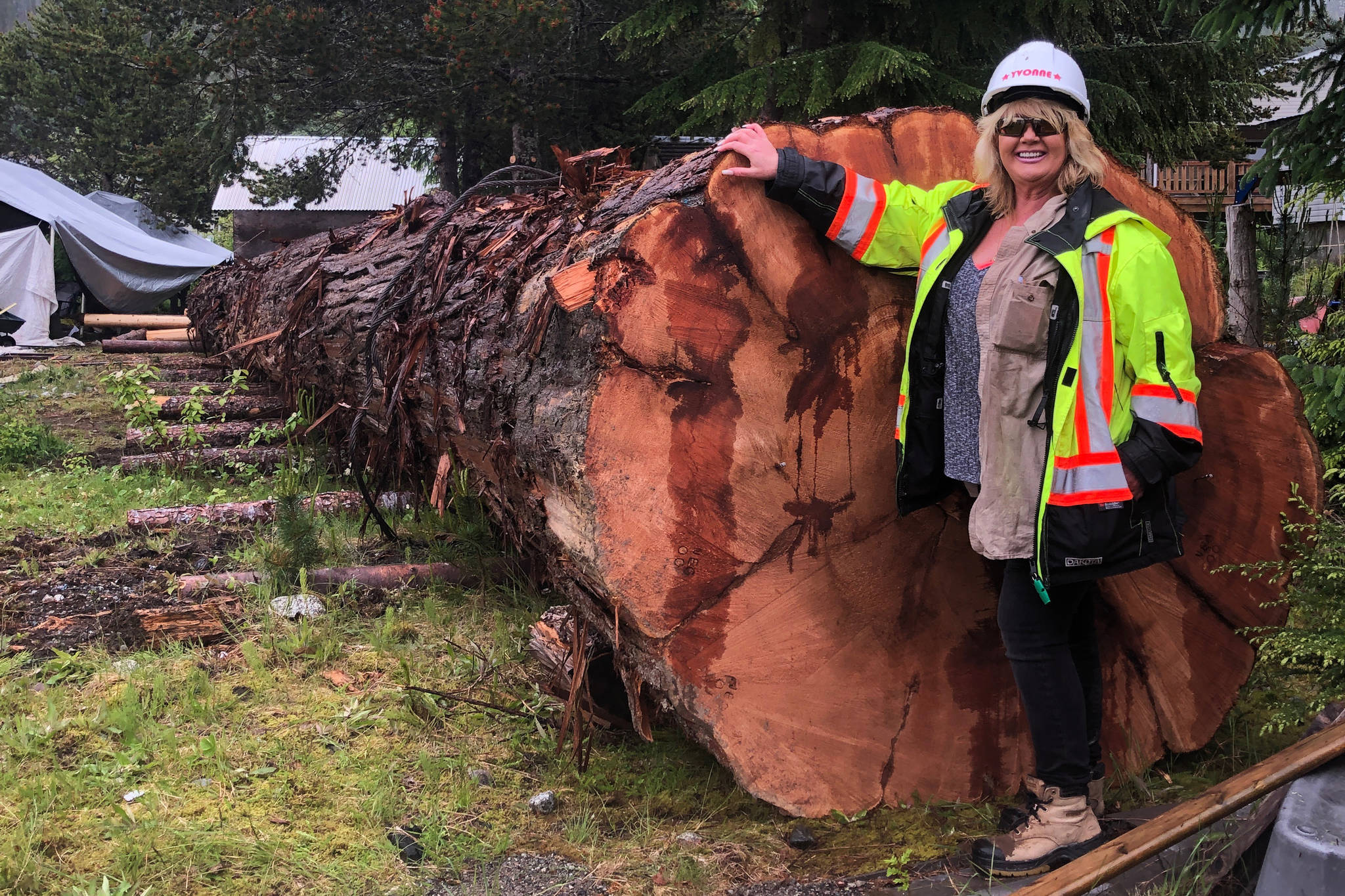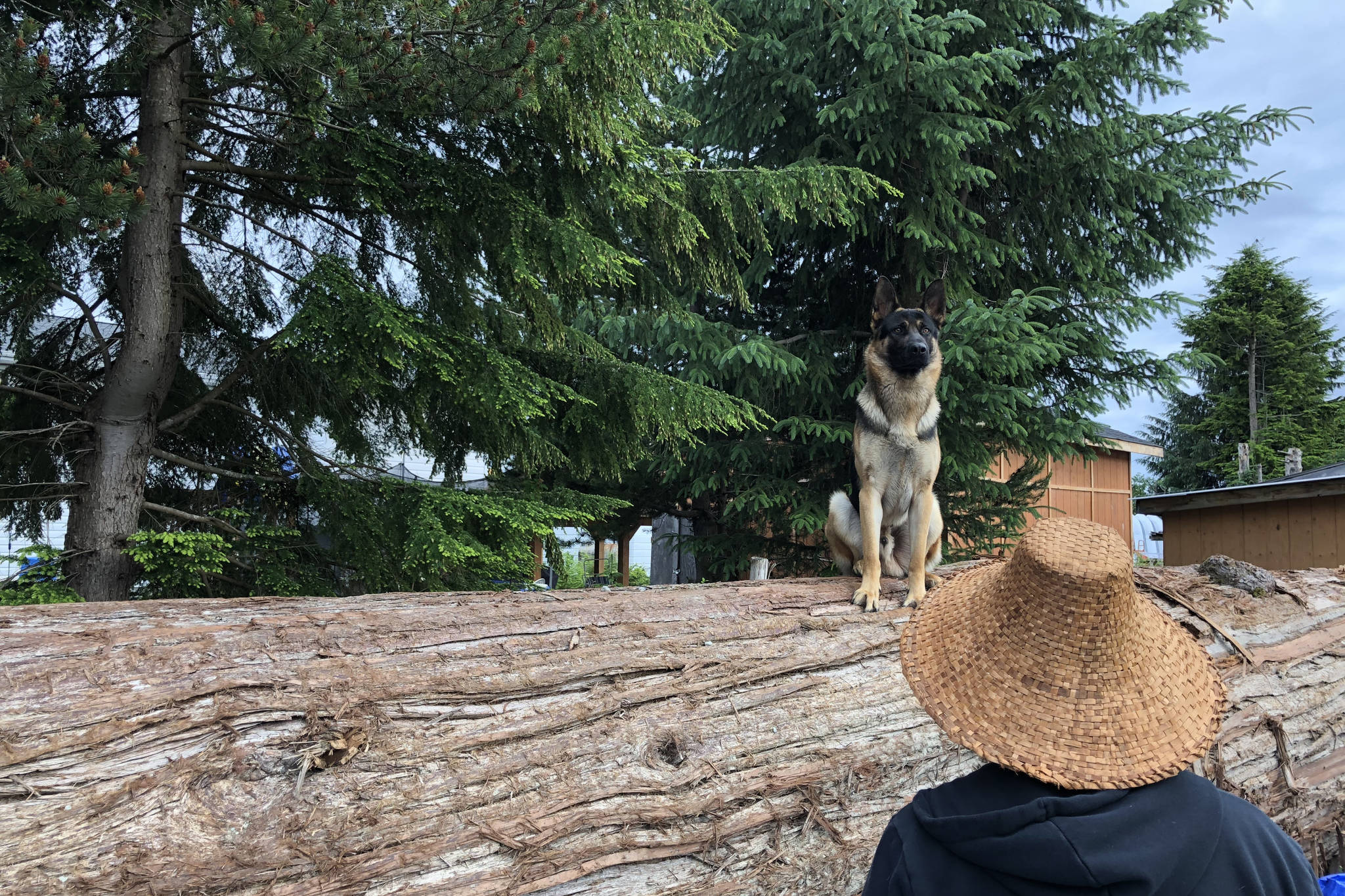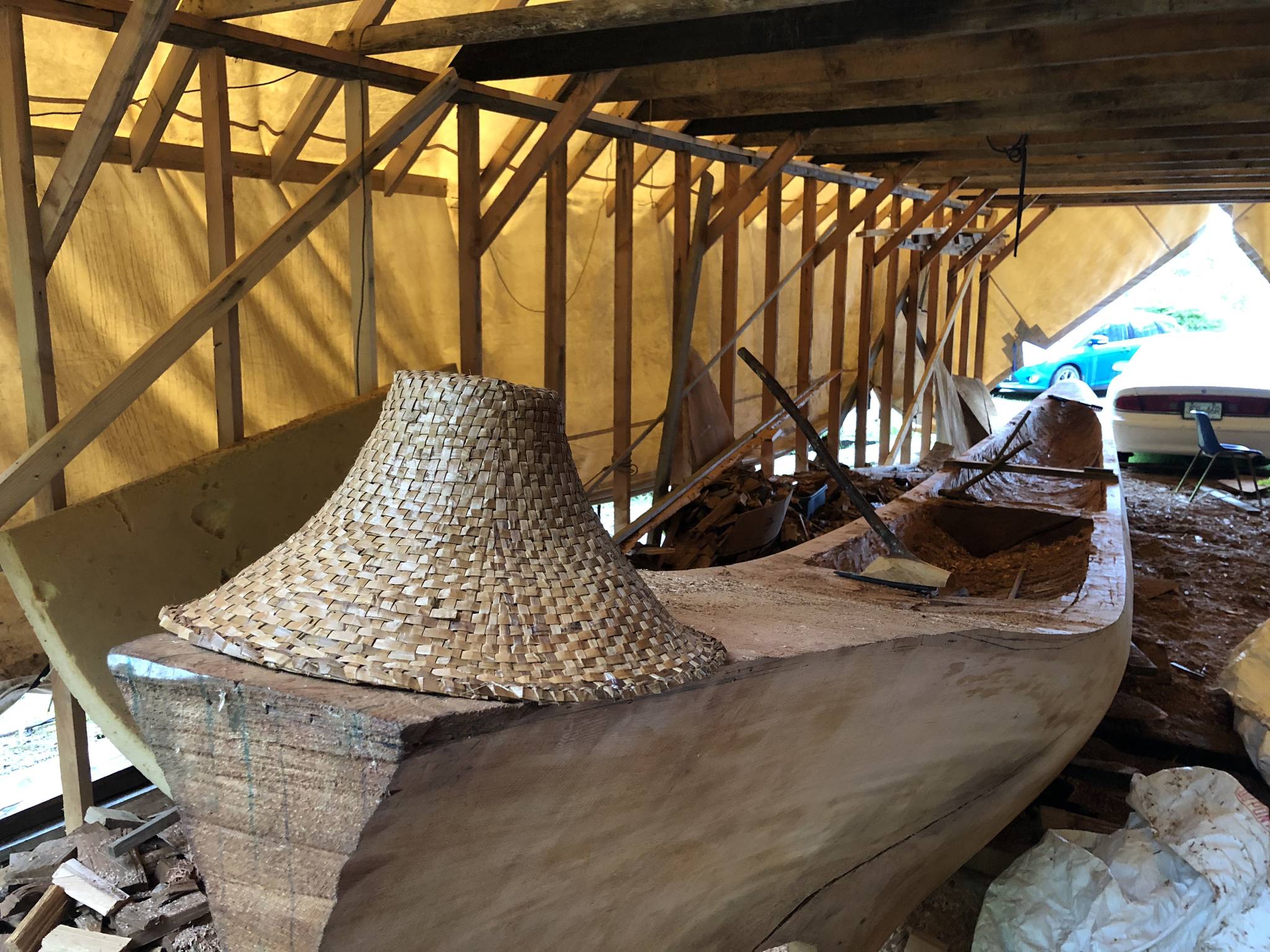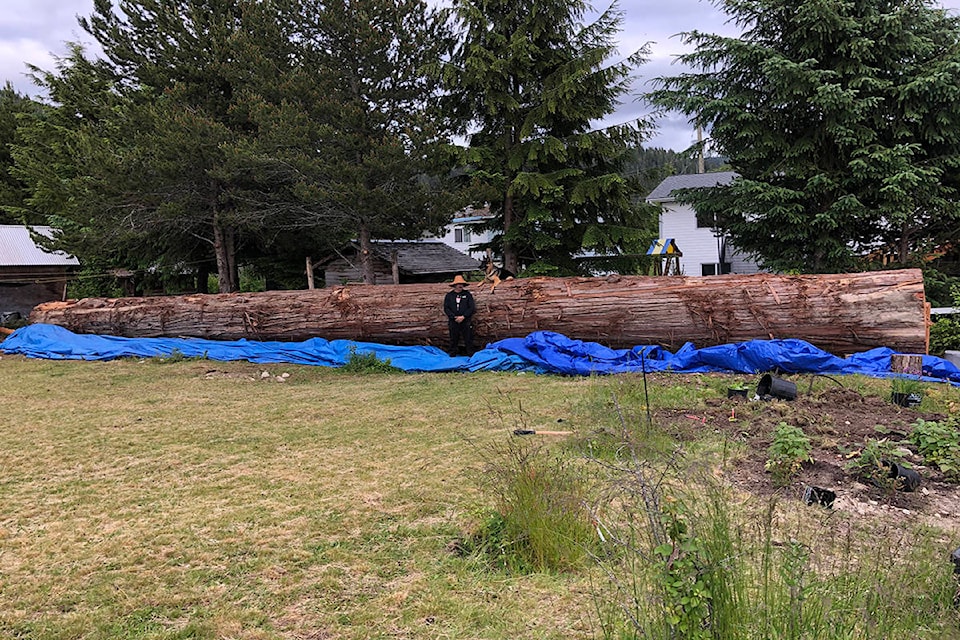It wasn’t Tomé Cordeiro’s initial intent to learn how to carve a canoe. About a year ago, he just wanted to learn how to properly sharpen his carving tools. But when the man he was going to for help, Greg Robinson, opened his door, a switch went off in Cordeiro’s mind.
“Instead of going into the house and saying I wanted to learn how to…[properly sharpen] tools, I said I wanted to learn how to build a canoe,” Cordeiro said. “That’s the words that came out of my mouth, and it wasn’t planned or anything.”
As a member of the Haisla community, Cordeiro knew that his ancestors were knowledgeable in the art of carving canoes. He also knew that there were few people left who still knew how to do it properly, and something in him decided that he wanted to be a part of keeping the tradition alive.
Greg directed Cordeiro to his brother, Mike Robinson, who became Cordeiro’s mentor. Robinson had been working on his own canoe for just over a year, and learned through the generations of canoe builders in his family before him.
Robinson’s great-grandfather, David Shaw, has a canoe in the University of British Columbia’s Museum of Anthropology, and Robinson learned from watching him, then his grandfather, and then his father after that.
“I always had it in mind to build one, but I never really had the time until now,” Robinson said. “There’s more than meets the eye in doing this job…getting the right proportions, measurements, for width and depth. It’s a science.”
Like Cordeiro, Robinson has the desire to keep the tradition of canoe building alive, which is why he agreed to teach and mentor Cordeiro.
After that, the learning began, and it was like spark after spark, igniting into today, where 47-year-old Cordeiro has decided to carve a canoe by himself, like Robinson is doing, using no power tools, following the ways of his ancestors.
It was a comment by his uncle that first gave Cordeiro the idea to carve a canoe by himself. His uncle had pointed out a tree and mentioned that he had been interested in turning it into a canoe, but was unable to do it himself.
The tree was unfortunately rotten, but Cordeiro looked around and found a tree he thought he wanted. Robinson suggested he go through the proper channels to cut it down, so that’s what Cordeiro did. He went to the District of Kitimat office, found the owners of the land the tree was on, and told them of his intentions with the tree.
“In the end I had five white hard hats at the base of this tree, telling them what I was up to and telling them that I was…helping revive the art of canoe building with my mentor.”
Cordeiro’s plan was approved, but the landowners thought they could help him find a better tree. They continued looking around until they found a good, solid cedar tree, one he knew he wanted to use. The tree was cut and Robinson, along with several non-community members helped transport it over to his property. He had no money to pay them for their help, but told them he wanted to take the bark from the tree to weave them cedar hats as a gift in return, a skill he learned a couple of years ago.
“I think it’s amazing that a guy with a drive to keep canoe building alive, that’s what’s paid for that log to get behind my house.”
Cordeiro also said he wanted to save up some money so he could make a thank-you supper for everyone involved, and introduce the non-community members to more of his community.
“The Haisla, and Tracey Ross, for allowing me to bring the log into the community,” Cordeiro said, “Dent, Mammoet, CGL, MSJV, Rio Tinto, Wayne Webber [of North Coast Log Handling] and Rick Kosolofski [of Skeena Sawmills], these are the people I want to thank. The people who played that key role in helping the future of our culture connect to the sacred cedar trees.”
Cordeiro said both he and Robinson share a desire of building canoes, especially as a way to continue learning more about their culture’s history and language.
“I just have a desire to learn what my ancestors were doing,” Cordeiro said. “I had the desire, and he had the tools and what we needed to begin building.”
Cordeiro said the drive to do this, like for Robinson, is in his blood, something he found out while initially learning how to carve a canoe. Cordeiro said the men teaching him told him how his maternal grandfather was also a canoe builder, something Cordeiro hadn’t known previously because he doesn’t remember his grandfather.
But after learning this and getting the cedar tree delivered to his house, he knew he was meant to be carving this canoe.
“The crazy thing is, the day it was brought into my property, my mom’s property, it was her dad’s birthday,” Cordeiro said. He said she hadn’t even been thinking about the log, but had randomly remembered and said aloud, “It’s your Baba’s birthday.” Cordeiro had gasped, then his mother looked at the log, gasped as well, and said to him, “Your Baba’s watching out for you.’”
Cordeiro said his Haisla name, “Kah-kah-neese baba-o” means “Grandfather’s echo” and he feels it’s very appropriate. He said he thinks that his undertaking of this project is something his grandfather would be proud of, seeing his grandson follow in his and his ancestors’ footsteps and play a part in bringing the ancestral practice back into the community.
“I know he’s smiling down, because this all took place on his birthday,” Cordeiro said.
Cordeiro said he’s not going to start working on anything until August 1, which will be the fourth anniversary of his sobriety. He doesn’t know what he plans to do with the canoe once he’s finished, but will likely try to keep it in his community so the tradition can be passed down and remembered through generations.
He also already has deals lined up for more logs to carve more canoes going forward, so he can work towards getting more of the community, and younger generations, especially, involved in the almost-lost art.
“Now, the art of canoe building is back alive. It almost died,” Cordeiro said. “[but] it’s here. Canoe building is alive in Haisla Nation.”
clare.rayment@northernsentinel.com
Like us on Facebook and follow us on Twitter
